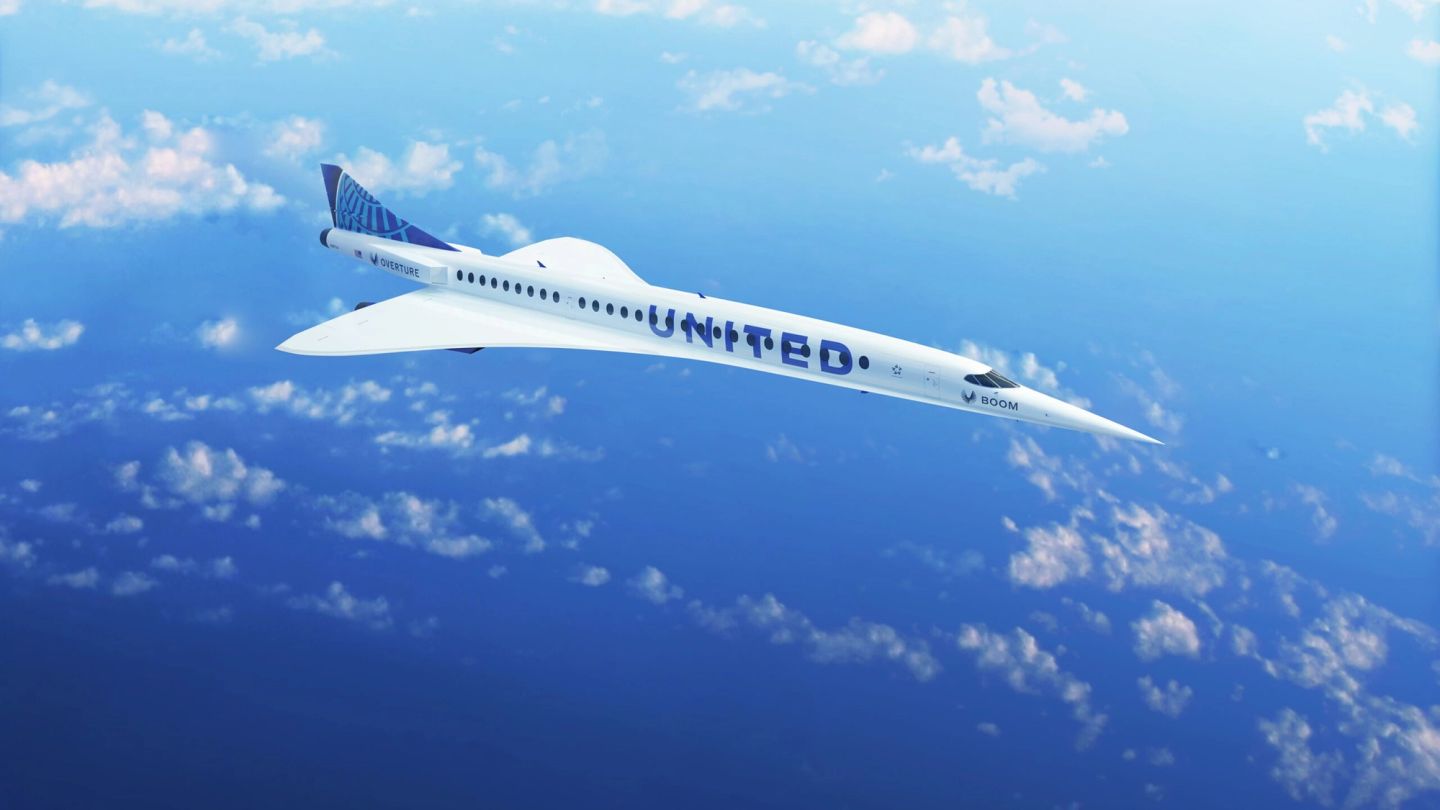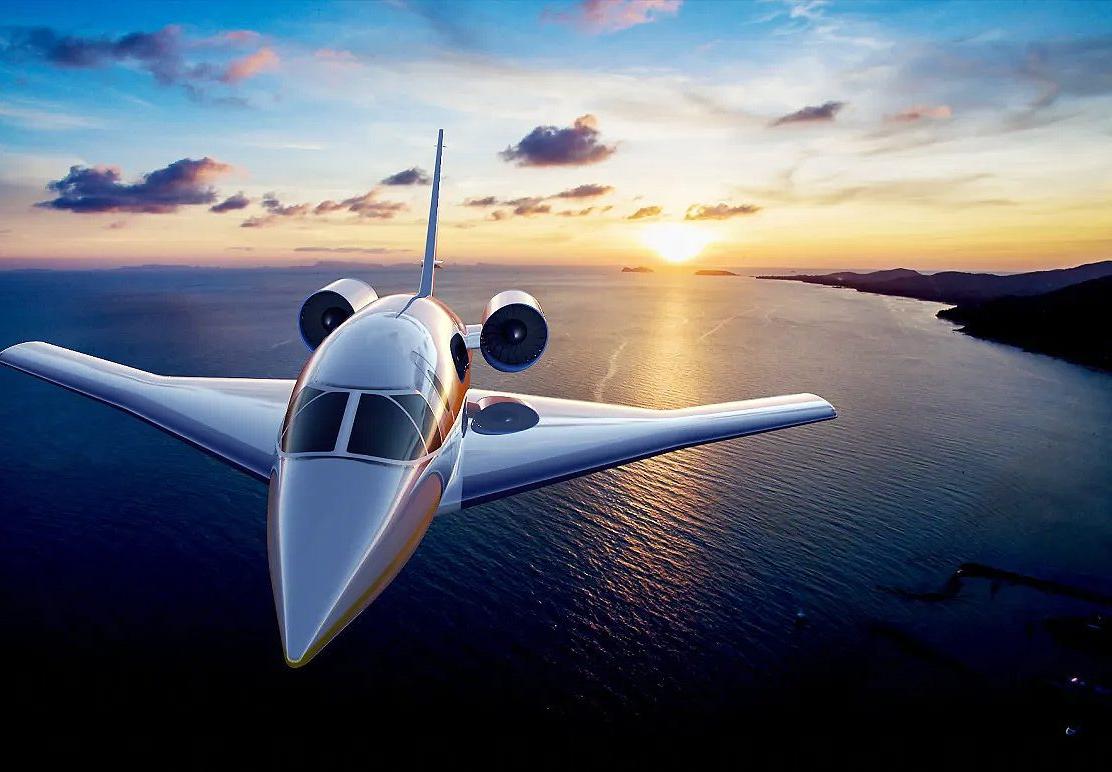

Words: Josh Lee
It has been nearly two decades since British Airways and Air France decommissioned Concorde, the revolutionary aircraft that could travel faster than the speed of sound and approximately halve the duration it took to cross the Atlantic from London to New York. While most conventional passenger jets have a capacity to cruise at around 560mph, Concorde, in operation between 1976 and 2003, could cruise at a speed that was over 700mph faster.
Despite this feat of aerodynamic design, issues of high maintenance costs, bumper ticket prices, and unsustainable fuel consumption all dovetailed to retire this pioneering fleet. However, 19 years on, the aviation world may once again witness the power and potential of supersonic speeds thanks to a coterie of startups and young companies that are currently developing the next generation of supersonic – and even hypersonic – aircrafts.
Below, we take a quick-stop tour of the newest hyper-speed planes that are set for the skies.
Boom Supersonic
The hyper-quick rundown , The aircraft monikered Overture will be 205ft-long, with a passenger capacity between 65 and 88. It will be the first commercial supersonic flight conceived by Boom, a company founded in 2014 in Denver, Colorado and whose name derives from the loud bang heard on earth when there’s a nearby object flying faster than the speed of sound – an issue that Boom says it should be able to nix. Boom is aiming to reach speeds of around 1,120 mph, not far from double the speed that is required to break the sound barrier, and United airline is slated to buy 15 of the models, once safety, sustainability and operating requirements are met.
Moreover, running exclusively on sustainable, net-zero carbon aviation fuel is integral to the Boom project, and it recently announced a decade-long agreement with Climeworks, a Swiss company that uses direct air-capture (DAC) technology to remove CO2 from the atmosphere. More than 500 routes are expected to be offered.
The roadmap , The plan is to start building in 2024, with the inaugural model to come off the manufacturing line in 2025, and the first test flight to occur the following year – and, if that all goes to plan, a commercial service will commence in 2029. Building and testing is set to be done in Greensboro, North Carolina, a state with close proximity to the Atlantic (ideal for carrying out tests) and one that, rather symbolically, saw the Wright brothers carry out the first successful powered flight of a heavier-than-air aircraft.
Flight time, Boom claims that its aircraft should be able to do a New York to London flight in three-and-a-half hours – just a little over the Fellowship of the Ring’s running time! – cutting the usual flight-time approximately in half. It also projects itself to being able cover to the distance between LA and Sydney in approximately eight-and-a-half hours (less than the average UK work day).
In their own words, “Experience new possibilities at supersonic speed, where cities now rarely visited become major travel destinations. We can attend meetings in far-off places and return for evenings with loved ones. Children grow up in a world where nothing is foreign.”
Exosonic

The hyper-quick rundown, California startup Exosonic angles itself on creating a supersonic airliner that gives off a softening, “low-boom” sound. “How to generate a local supersonic airplane is through the aerodynamic shaping of the vehicle. So, you’ll see that a lot of these vehicles typically have a long nose, and that’s how to help distribute the shockwaves across the vehicle so that they’re spread out as they travel above the ground and send a series of smaller, weaker booms,” said CEO Norris Tie, last year. It is also expected to have flight capabilities of Mach 1.8; the company claims that flights will have a price-tag similar to those of business-class tickets; it will “comfortably” cart 70 passengers; and will have a 5,000-nautical-mile range.
Rather impressively, Exosonic has also been working on federal government-backed projects, first being handed a contract by the Presidential and Executive Airlift Directorate to develop a concept for the presidential and executive airlift vehicle; then receiving support from the US Air Force in order to develop an unmanned demonstrator aircraft that will act as a mock adversary in live-flight pilot training. Such profits will be pumped into further supersonic developments. Exosonic also recently partnered with Twelve, a carbon transformation company, to formulate synthetic, sustainable fuel to power its jet engines.
Roadmap, Commercial flights by approximately mid-2030s.
Flight time, London to Hong Kong in six hours; or a coast-to-coast flight from New York to LA in three hours, which is roughly the average time it takes to finish a men’s singles tennis match.
In their words:, “Our vision at Exosonic is to fly people supersonic everywhere with our airliner designed to fly supersonic overland with a muted sonic boom.”
Hermeus
The hyper-quick rundown , Hermeus, the start-up from Atlanta, Georgia, aims to produce an aircraft capable of travelling at hypersonic speeds, which is five times faster than that of the speed of sound. Its airliner is attempting to achieve such velocity through its Chimera engine, a hybrid that combines a standard jet engine with a ramjet, an air-breathing engine that runs on the aircraft’s forward speed.
The fork-nosed Quarterhorse, the first in Hermeus’s series and the first to test the Chimera, is an autonomous aircraft mainly made for demonstration purposes – a non-flying prototype was engine test-fired late in 2021. Earlier this year, Hermeus announced it had raised $100m which will go towards completing its prototype and building three further aircrafts that are capable of flight. Its website also states that the company “is partnering with government agencies including the US Air Force and NASA to develop a series of autonomous aircraft that derisk the technology and solve urgent national security challenges.”
The roadmap, If all is successful with Quarterhorse, this will then be be followed by Darkhorse, which will fly at sustained hypersonic speeds and be expected to carry cargo or payloads. Then, Halycon, a hypersonic commercial passenger jet able to carry 20 passengers, will undertake its first test flight around 2029.
Flight time, New York to Paris in 90 minutes (approximately the same duration as riding the entire Piccadilly Tube line), or Seattle to Tokyo in just under three hours.
In their own words, “At Mach 5, more than twice the speed of the supersonic Concorde, passengers will be able to cross the Atlantic in 90 minutes.”
Spike Aerospace

The hyper-quick rundown, Based in Boston, Spike Aerospace’s Spike S-512 appears to come straight from the space-age, so otherworldly and genre-bending is its Jetsons-style aesthetic. It is set to have enough space to host 18 passengers, with a speed of Mach 1.6 that allows for “a quick jaunt to Paris from Dubai for shopping and entertainment – and back home again in time for dinner.” The developers are said to be working on increasing the speed of the jet to Mach 3.3, meaning travellers could fly from London to New York in 90 minutes.
The sonic boom, the company says, will be an “ultra quiet” sound that’s comparable to a “soft clap”, and, most notably, noise infiltration within the cabin, whose interior is probably closest to replicating the usual trappings of the premium-class airlines, will be reduced by removing windows and replacing them with larger, cabin-length high-definition screens that can either show realtime panoramas of the outside, or screen films and work presentations.
Roadmap, It was last reported that Spike Aerospace is aiming to undertake trials this year, with an eye on launching commercial flights by 2028.
Flight time, Seattle to Shanghai in six hours – which allows for a viewing of The Wolf of Wall Street (twice!).
In their words: , “Zoom works great but if you’re doing a billion dollar deal, you really want to be there on the ground, to touch and feel and see it.”
Want more high-speed reads? We catch up with Jenson Button in this exclusive interview…
Become a Gentleman’s Journal member. Find out more here.


